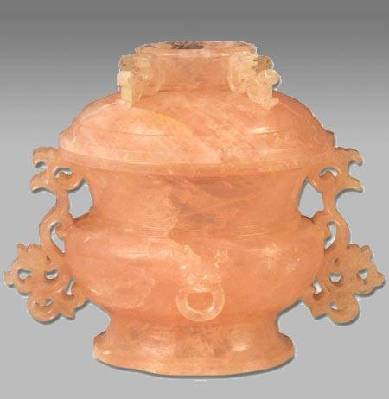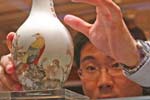Heritage
Rare collections of the Ming and Qing Dynasties
Updated: 2011-04-06 14:48
By Liu Fang (chinaculture.org)
 |
|
Rose quartz dragon-headed censer |
Reign of Emperor Qianlong, Qing Dynasty (1661-1722)
Overall height: 17cm
Diameter: 14.9cm
Nanjing Museum
The rose quartz dragon-headed censer is a direct copy of the gui in shape. It first appeared during the Shang Dynasty (About 1600-1100 BC). The gui was a serving vessel similar to a large bowl and commonly made of pottery, bronze or porcelain, and was often used as a burial object.
This censer is made of rose quartz or furong stone, which is one type of Shoushan Stone. The texture is fine and moist. Although there are plenty of jade censers from the Qing Dynasty, few are made of rose quartz because the making of a censer requires a relatively large-sized block of material, and large pieces of rose quartz are rare because of its fragility.
The censer has a wide opening, large body, two handles and a foot ring. The four sides of the cover and two handles are carved with a chi-dragon pattern. The chi is said to be “a hornless dragon” and is one of the nine sons of the dragon in Chinese mythology, which is a common motif in ancient Chinese art and architecture.
Specials

Share your China stories!
Foreign readers are invited to share your China stories.

Art auctions
China accounted for 33% of global fine art sales.

Waiting for drivers' seat
Lack of sponsorship appears to be why Chinese drivers have yet to race in a Formula 1 event